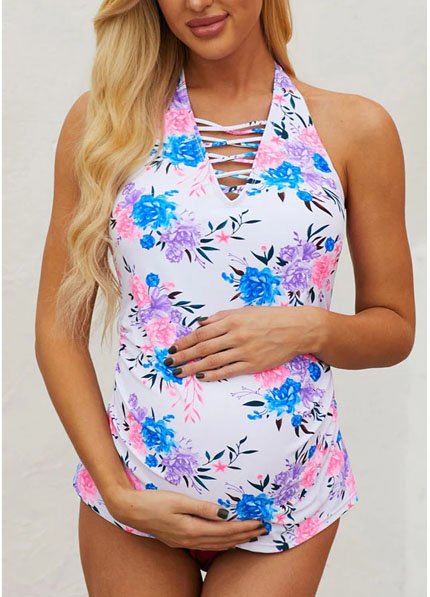

Introduction:
Maternity wear has evolved significantly in recent years, offering expectant mothers a wide range of options to express their personal style while accommodating their changing bodies. In this article, we’ll explore the essentials of maternity wear, from what to wear to when to wear it, supported by relevant medical insights to ensure both comfort and safety throughout pregnancy.
Understanding Maternity Wear:
Maternity wear is specifically designed to accommodate the changing shape of a pregnant woman’s body. It typically includes a variety of clothing items, such as tops, dresses, jeans, skirts, and undergarments, made from stretchy, breathable fabrics that provide both support and comfort. The key to maternity wear is versatility, allowing women to transition seamlessly from casual outings to formal occasions without compromising on style or comfort.

Essential Maternity Wear Wardrobe Staples
- Maternity Jeans: Invest in a pair of maternity jeans with stretchy panels or waistbands that can be adjusted as your belly grows. Look for styles that offer support to your lower back and hips, with stretchy denim fabric for maximum comfort and flexibility.
- Maternity Tops: Stock up on maternity tops that are designed to accommodate your growing bump. Choose tops specifically designed for pregnancy, featuring empire waistlines, stretchy fabrics, and extra room in the bust area. Flowy blouses, tunic tops, and wrap-style tops are popular choices for both comfort and style.
- Maternity Dresses: Choose dresses with empire waistlines, wrap styles, or A-line silhouettes that provide plenty of room for your expanding belly. Flowy fabrics like jersey or cotton are ideal for maximum comfort.
- Maternity Leggings: Comfortable and versatile, maternity leggings can be paired with tunics, dresses, or oversized sweaters for a chic and cozy look. Look for options with supportive belly bands that provide gentle compression.
- Maternity Bras: Invest in supportive maternity bras that offer ample coverage and adjustable straps. As your breasts grow during pregnancy, it’s important to choose bras with soft, stretchy fabrics that provide comfort and support without digging into your skin.
When should you start wearing maternity clothes?
While every pregnancy is unique, most women start to notice changes in their body around the second trimester, typically between 12 to 16 weeks. This is when it’s a good idea to start incorporating maternity wear into your wardrobe to ensure comfort and support as your belly expands. However, some women may need maternity clothing earlier or later in their pregnancy, depending on factors such as the size of their bump and their pre-pregnancy body shape.
Understanding Maternal Physiology:
Pregnancy brings about a myriad of physiological changes. As the foetus grows, the uterus expands, leading to an increase in abdominal circumference. Simultaneously, hormonal fluctuations cause ligaments to loosen, resulting in a shift in the centre of gravity and changes in posture. Additionally, blood volume and fluid retention increase, contributing to swelling in various parts of the body, particularly the feet and ankles.
Anatomy-Informed Design Principles: Maternity wear designers consider these physiological changes when creating garments that provide comfort and support without compromising style. Here are some anatomy-informed design principles which guide the creation of maternity wear:
- Fabric Selection: Look for soft, breathable fabrics with stretch properties. Natural fibres like cotton and bamboo are excellent choices as they allow for better air circulation and minimize skin irritation. Stretchy materials like elastane or spandex accommodate the changing body shape without constriction.
- Adjustable Features: Incorporate adjustable features such as elastic waistbands, drawstrings, or side ruching to accommodate the expanding abdomen. This ensures a snug fit throughout the various stages of pregnancy.
- Supportive Structures: Integrate built-in support mechanisms such as belly panels or supportive bands to alleviate strain on the lower back and pelvis. These features provide gentle compression and help distribute the weight of the growing belly more evenly.
- Emphasis on Comfort: Prioritize comfort without sacrificing style. Choose designs that allow freedom of movement and minimize pressure points. Flat seams and tag less labels prevent skin irritation, while wide straps and soft, non-restrictive bands enhance overall comfort.
- Versatility: Create versatile pieces that can transition seamlessly from pregnancy to postpartum. Multi-functional garments like wrap dresses or nursing tops with discreet openings cater to the evolving needs of expectant and new mothers.

What not to wear during pregnancy?
- Tight or restrictive clothing: Tight clothing, such as skinny jeans or tight-fitting tops, can constrict your growing belly and may be uncomfortable.
- High heels: Wearing high heels can throw off your balance and put extra strain on your back, especially as your body changes during pregnancy. Choose supportive, comfortable shoes with low heels or flats instead.
- Heavy, bulky fabrics: Heavy fabrics like wool or thick polyester can cause you to overheat, which can be uncomfortable and potentially harmful during pregnancy. Lightweight, breathable fabrics like cotton are a better choice.
- Clothing with harsh dyes or chemicals: Some fabrics may contain dyes or chemicals that can irritate your skin or be absorbed into your body. Look for clothing made from natural, organic materials to minimize exposure to potentially harmful substances.
- Waistbands that dig into your belly: Avoid clothing with tight waistbands that dig into your belly, as they can be uncomfortable and restrict blood flow to your growing baby. Instead, opt for maternity clothing with stretchy, adjustable waistbands that can accommodate your changing shape.
- Underwire bras: Underwire bras can dig into your chest and ribcage, causing discomfort and potentially even restricting milk ducts as your breasts grow during pregnancy. Choose soft, supportive maternity bras without underwire for maximum comfort.
- Clothing with embellishments near the belly: Avoid clothing with heavy embellishments or decorations near the belly area, as they can be uncomfortable and may cause irritation or pressure on your growing bump.
- Anything that makes you feel uncomfortable: Ultimately, the most important thing is to listen to your body and wear clothing that makes you feel comfortable and confident during pregnancy. If something feels tight, restrictive, or uncomfortable, it’s best to avoid it and opt for something more accommodating.
Conclusion:
Maternity wear plays a crucial role in ensuring comfort, support, and style throughout pregnancy. By investing in the right clothing items made from quality fabrics and tailored to your changing body, you can embrace this special time with confidence and ease. Remember to prioritize comfort, versatility, and personal style when building your maternity wardrobe, and don’t hesitate to seek medical advice if you have any concerns about clothing choices or fit during pregnancy.

References:
- American College of Obstetricians and Gynecologists. (2020). Exercise During Pregnancy: Frequently Asked Questions. [Online]: https://www.acog.org/womens-health/faqs/exercise-during-pregnancy
- The Royal Australian and New Zealand College of Obstetricians and Gynaecologists. (2019). Exercise during Pregnancy – RANZCOG. [Online]: https://ranzcog.edu.au/statements-guidelines/exercise-during-pregnancy
- The American College of Obstetricians and Gynecologists. (2020). Physical Activity and Exercise During Pregnancy and the Postpartum Period: ACOG Committee Opinion Summary, Number 804.
RECENT POSTS
- The Differences in a Twin Pregnancy: What You Need to Know
- What is the significance of bleeding at different stages of pregnancy?
- How to Cope with Claustrophobia: Effective Strategies for Managing Anxiety
- 50 Great Bible Quotes Relating to Pregnancy
- 10 Tips for Getting a Baby to Sleep
- How Much Sleep Does a Baby Need? A Comprehensive Guide for New Parents
- How to Make Money with ChatGPT: A Comprehensive Guide
- Unexplained Infertility: What Can You Do. Advice and Guidance
- The Benefits of Mindfulness: A Practical Guide to a Healthier and Happier Life
- Constipation During Pregnancy: Causes, Prevention, and Relief
- Pregnancy Myths, Superstitions, and Old Wives’ Tales: Fact or Fiction
- Endometriosis: The Impact on Fertility and Pregnancy
- Disabled and Pregnant: Equality Problems and Solutions
- Meconium Clinical Significance and Warning Signs
- Hypnosis in Pregnancy and Delivery: A Comprehensive Guide
- Pregnancy Tests: What is Amniocentesis? Your Complete Guide.
- Study at Home for a New Job or New Career: Your Path to Success
- What is Advanced Maternal Age?
- Essential Guide to Changes in Pregnancy
- Buying for a New Baby: The Essentials
Leave a Reply